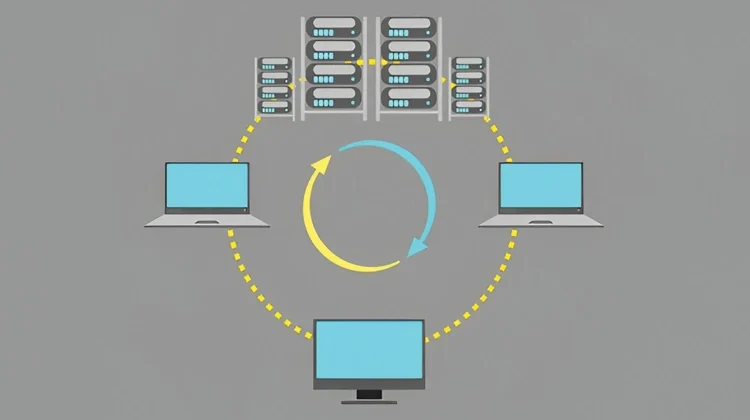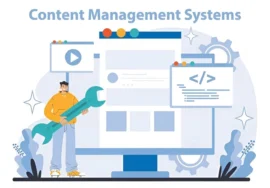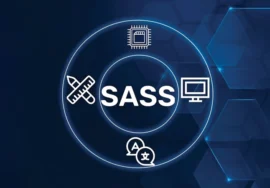
CDNs and Web Caching: Speeding Up Delivery for a Blazing-Fast Web Experience
In the age of instant gratification, website speed has become a paramount factor for online success. The modern internet user expects web pages to load, and even a few seconds of delay can lead to frustration and a high bounce rate. This is where Content Delivery Networks (CDNs) and web caching come into play, acting as a powerful duo to boost website performance and user experience.
This comprehensive guide delves into the world of CDNs and web caching, explaining how they work and how to create a lightning-fast web experience for your visitors.
Understanding Web Caching: The Local Speed Booster
Imagine a scenario where your browser doesn’t need to download every single element of a website you’ve visited before. Web caching makes this a reality. It’s a technique where accessed resources, such as images, JavaScript files, and CSS style sheets, are stored on a local server. This local server could be your device’s browser cache, your internet service provider’s (ISP) cache, or even a cache implemented on your original server (the server where your website files live).
Here’s how web caching benefits website performance:
- Reduced Latency: When a user revisits a website, their browser can retrieve cached resources instead of requesting them from the original server. This reduces latency, the time it takes for data to travel between the user’s device and the server. Lower latency translates to faster page load times.
- Improved User Experience: Faster loading times lead to a more enjoyable user experience. Users are less likely to get frustrated and abandon the website if pages load.
- Reduced Server Load: By serving cached content, web caching eases the pressure on your original server. This is beneficial for websites experiencing high traffic volumes.
Types of Web Caching:
There are three main types of web caching:
- Browser Cache: This is the most basic form of web caching. When you visit a website, your browser stores accessed resources like images and scripts on your device. This allows for faster loading times during later visits.
- Proxy Server Cache: Many ISPs use proxy servers that cache accessed content from various websites. When a user requests a website, the ISP’s proxy server checks its cache first. If the requested content is available, it’s served from the cache, resulting in faster delivery for the user.
- Origin Server Cache: You can configure your original server to cache static content. This can be beneficial for websites with a high percentage of static content that doesn’t change.
The Powerhouse of Speed: Content Delivery Networks (CDNs)
While web caching excels at improving performance for repeat visitors, it has limitations for dispersed audiences. This is where CDNs enter the scene.
A CDN is a distributed network of servers located around the world. These servers hold cached copies of your website’s static content. When a user requests your website, the CDN directs them to the nearest server, reducing the physical distance data needs to travel. This translates to lightning-fast load times for all users, regardless of their location.
Here’s how CDNs contribute to a speedy web experience:
- Content Delivery Optimization: By serving content from the closest server, CDNs dramatically reduce latency. This ensures that users experience fast loading times, even if they are located far away from your original server.
- Improved Scalability: CDNs can handle significant traffic spikes without compromising performance. This is because the load is distributed across the entire network of servers, preventing your original server from becoming overloaded.
- Enhanced Reliability: CDNs offer redundancy. If one server experiences an outage, users can still be served content from other servers within the network. This ensures high availability and a resilient online presence.
- Security Features: Many CDNs offer additional security features like DDoS (Distributed Denial-of-Service) attack mitigation and SSL certificate management, further strengthening your website’s security posture.
The Synergy of CDNs and Web Caching: A Winning Combination
While both CDNs (Content Delivery Networks) and web caching aim to accelerate content delivery, they operate on distinct levels, ultimately creating a powerful synergy for website performance. Web caching focuses on local storage, primarily benefiting returning users, while CDNs provide a geographically distributed network, ensuring fast load times for everyone.
This combined approach offers a multi-layered speed boost for your website:
Local Optimization:
- Browser and Server Caching: When users revisit your website, cached resources like images, scripts, and stylesheets are readily available on their device’s browser cache or your original server’s cache. This eliminates the need to download them again, leading to immediate rendering and a noticeably faster experience.
Global Acceleration:
- CDN Network: For new visitors or those located far from your original server, CDNs take center stage. By intelligently routing users to the closest server in the network, CDNs significantly reduce the physical distance data needs to travel. This translates to lightning-fast page load times regardless of a user’s geographical location.
The Benefits of Synergy:
This combined approach of web caching and CDNs offers a multitude of benefits:
- Enhanced User Experience: Faster loading times lead to a more engaging and satisfying experience for users. They’re less likely to encounter frustration or abandon the website due to slow loading speeds.
- Improved Search Engine Ranking (SEO): Search engines prioritize websites that load quickly. By implementing CDNs and web caching, you can significantly improve your website’s SEO ranking, leading to increased organic traffic.
- Boosted Conversion Rates: Faster loading times can directly impact conversions. Studies show that even a slight delay in page load times can cause a significant drop in conversion rates. A speedy website translates to more leads, sales, or desired user actions.
- Reduced Server Load: By serving cached content, both CDNs and web caching alleviate pressure on your original server. This is crucial for websites experiencing high traffic volumes or those with limited server resources.
Implementing the Winning Combination:
Many hosting providers offer CDN services alongside web hosting plans. Additionally, standalone CDN providers are readily available. When choosing a CDN solution, consider factors like global network coverage, pricing plans, and security features.
Web caching can be implemented on various levels:
- Browser Caching: Modern browsers already have built-in caching mechanisms. Optimizing your website’s code with proper caching headers can further leverage browser caching capabilities.
- Server-Side Caching: Many web hosting platforms and content management systems (CMS) offer built-in server-side caching functionalities. Explore the options available within your chosen platform to configure server-side caching for your website.
Conclusion:
By combining the power of CDNs and web caching, you can create a lightning-fast website experience for users worldwide. This not only enhances user experience and satisfaction but also brings significant SEO and conversion rate benefits. By implementing these strategies, you can ensure your website remains competitive and delivers exceptional performance in today’s fast-paced online world.





